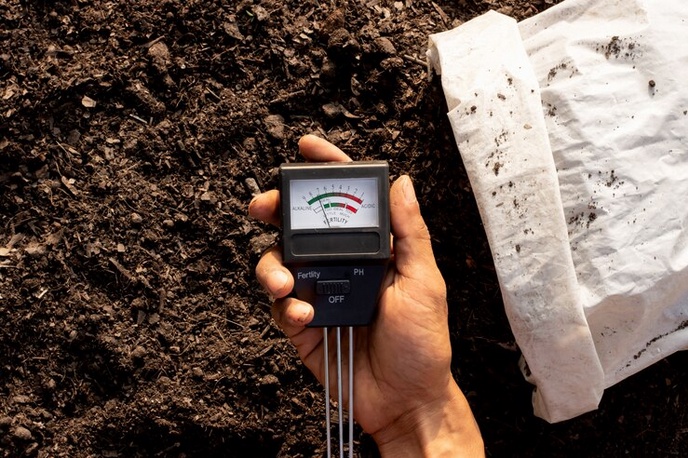Introduction:
The quality of soil plays a critical role in various environmental processes, including water infiltration, nutrient cycling, and plant growth. Understanding soil quality is essential for sustainable land management, agriculture, and urban development. Infiltration testing offers a valuable method for assessing soil quality by measuring the rate at which water penetrates the soil surface. This essay explores the significance of infiltration testing, highlighting its benefits, applications, and implications for effective soil management.
Understanding Infiltration Testing:
Infiltration testing involves applying a controlled amount of water to the soil surface and measuring the rate at which it infiltrates into the ground. The results of infiltration tests provide insights into soil porosity, permeability, and infiltration capacity, which are critical indicators of soil quality. By evaluating these parameters, land managers, farmers, and urban planners can make informed decisions about land use, irrigation practices, and stormwater management.
Benefits of Infiltration Testing:
-
Assessing Soil Quality: Infiltration testing provides a direct measure of soil quality by evaluating its ability to absorb and retain water. Soils with high infiltration rates typically have good structure, porosity, and organic matter content, indicating optimal conditions for plant growth and nutrient uptake.
-
Identifying Soil Compaction: Low infiltration rates may indicate soil compaction, a common issue in agricultural and urban environments. Compacted soils have reduced pore space and permeability, limiting water infiltration and root penetration. Infiltration testing helps identify areas of soil compaction, allowing for targeted remediation measures such as aeration and tillage.
-
Evaluating Erosion Risk: Soil erosion is a significant environmental concern that can lead to loss of topsoil, nutrient runoff, and sedimentation in water bodies. Infiltration testing helps assess the erosion risk by determining the soil's ability to absorb rainfall and withstand surface runoff. Areas with low infiltration rates are more susceptible to erosion and may require erosion control measures such as vegetative cover and contour farming.
-
Informing Land Use Planning: Infiltration test results inform land use planning decisions by identifying areas with suitable soil conditions for various purposes, such as agriculture, construction, and stormwater management. By considering soil infiltration capacity, planners can optimize land use allocation, minimize environmental impact, and enhance overall land productivity.
Applications of Infiltration Testing:
-
Agriculture: Infiltration testing is widely used in agriculture to assess soil quality and optimize irrigation practices. Farmers use infiltration data to determine irrigation scheduling, water application rates, and drainage management strategies, thereby improving crop yields and water use efficiency.
-
Urban Stormwater Management: Infiltration testing plays a crucial role in urban stormwater management by evaluating the capacity of soils to absorb and filter runoff. Infiltration tests help design infiltration basins, rain gardens, and permeable pavements that promote groundwater recharge and reduce flood risk in urban areas.
-
Land Development: Infiltration testing is essential for land developers and planners to assess soil suitability for construction projects and infrastructure development. By evaluating soil infiltration rates, developers can design stormwater management systems that minimize runoff and mitigate the impact of impervious surfaces on the environment.
Implications for Soil Management:
The adoption of infiltration testing has significant implications for soil management practices, influencing land use decisions, agricultural practices, and environmental conservation efforts.
-
Sustainable Agriculture: Infiltration testing promotes sustainable agriculture by optimizing water use efficiency, reducing soil erosion, and enhancing soil health. Farmers can use infiltration data to implement conservation practices such as cover cropping, no-till farming, and precision irrigation, which improve soil quality and productivity while minimizing environmental impact.
-
Urban Green Infrastructure: Infiltration testing supports the implementation of green infrastructure solutions in urban areas, such as rain gardens, bioswales, and green roofs. These practices help manage stormwater runoff, mitigate urban heat island effects, and enhance biodiversity, contributing to healthier and more resilient urban environments.
-
Land Rehabilitation: Infiltration testing guides land rehabilitation efforts in degraded or contaminated sites by assessing soil infiltration capacity and identifying remediation needs. Restoration projects can incorporate soil amendment, revegetation, and erosion control measures based on infiltration test results, thereby restoring ecosystem functions and supporting biodiversity recovery.
Conclusion:
soil Infiltration test offers a valuable tool for assessing soil quality and guiding land management practices in agricultural, urban, and natural environments. By measuring the rate at which water infiltrates into the soil, infiltration tests provide insights into soil porosity, compaction, and erosion risk, which are critical factors for sustainable land use and environmental conservation. From optimizing irrigation practices in agriculture to designing green infrastructure in urban areas, the applications of infiltration testing are diverse and far-reaching. As land managers, farmers, and planners strive to address environmental challenges and promote sustainable development, infiltration testing will continue to play a vital role in ensuring the health and resilience of our soils and ecosystems.


No comments yet